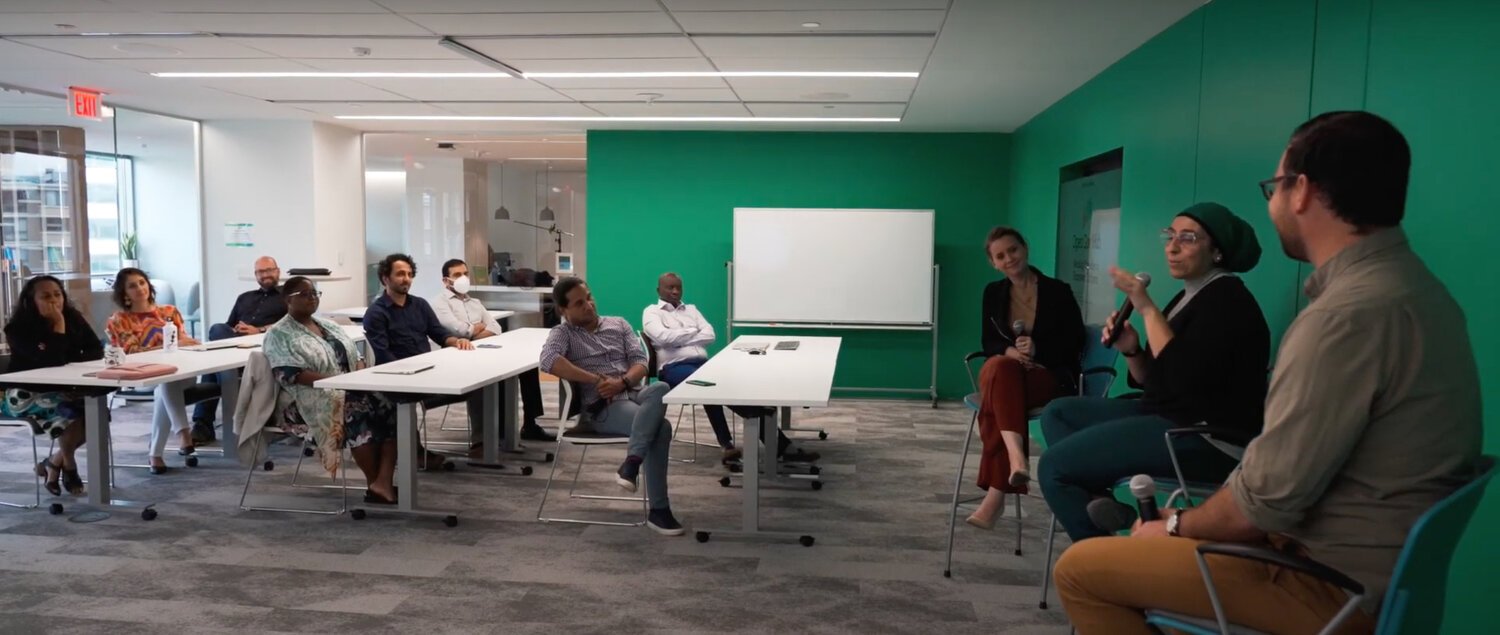5 Tips to Prepare for Hybrid Working this Fall
From Nada Zohdy, Director of the Open Gov Hub
Open Gov Hub is a unique meeting place and leading nonprofit network that has learned to adapt how we work in light of the pandemic. Going forward, what will work look like for nonprofits and other social impact organizations in D.C.?
A lively discussion at the new Open Gov Hub (downtown D.C.) led by Nada Zohdy.
This topic came up in our most recent monthly peer learning group meetup for Executive Directors called “The Vegas Collective.” Here are five tips for fellow nonprofit leaders thinking about hybrid work:
Balance two fundamental needs: individual focused work vs. collaborative teamwork. Most organizations have recognized that employees can be as productive, if not more, while working remotely. However, this comes with the risk of increased rates of burnout. So,we all need to design policies and programs that support optimizing work with continued productivity, while reducing the risk for burnout.
Make the implicit, explicit (or, structure is your friend). Undoubtedly one of the biggest benefits of the seismic shift toward increased remote working is the added flexibility that it offers. But we all need some structure to thrive, so don’t default to an “anything goes” type of approach. Instead, add some supportive structures that help ensure collaborative work, as well as autonomy and accountability that doesn't stifle flexibility. For example, while employees may be scattered across time zones and enjoy their flexible work schedule, make sure to have 2-3 hours of “time zone overlap” when everyone is online.
Provide creative forms of support. Many organizations are scaling back how much they spend on offices, which means some of those savings can be directed to long-term remote workers. Even providing a little added resource can go a long way - like a stipend to upgrade home office equipment, or covering the cost of a local coworking membership (like at the Open Gov Hub).
Think about different needs for different roles. Be aware of who is -- and isn’t -- in the room. Remote working affects people differently, based not only on their personalities and preferences, but also on their role in your organization. In general, managing people is harder to do from a distance, so it’s important that the team gets regular face-time whenever possible. It’s also especially valuable for more junior employees to have informal office interactions that can support their mentorship and career development, since these are much harder to replicate online. And as many of us plan on participating in hybrid meetings from now on , we need to equalize the playing field so that everyone can contribute. One simple step is to make sure there is a designated facilitator or host both for online participants and for those in the room, who can help make sure everyone is heard.
Don’t be afraid to experiment - then iterate (especially over the next several months). In the end, all EDs in our discussion agreed on their plan to do hybrid work in the long term, with a few days in office and a few days remote each week. And for those collaborative team days, we'll be working at the Hub in D.C. and trying new ways to connect with our globally dispersed teams. We look forward to continuing to support each other and learning together as we all try to optimize new and improved ways of working post-pandemic.
You can join us at our collaborative coworking space too this fall! Here is how to become a Hub Member and be an integral part of our growing community of like-minded organizations. See a virtual tour and learn how the Hub works in 2 short videos. Hope to see you there!


.png)